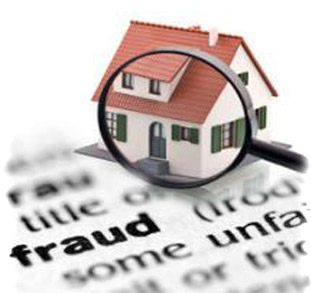 Mortgage fraud has been much in the news in recent years. After the dust created by the mortgage-fueled financial crisis of 2007-2008 began to clear, scrutiny of the mortgage-industry revealed extraordinary levels of fraud. This excerpt from the FBI’s Financial Crimes Report, 2008:
Mortgage fraud has been much in the news in recent years. After the dust created by the mortgage-fueled financial crisis of 2007-2008 began to clear, scrutiny of the mortgage-industry revealed extraordinary levels of fraud. This excerpt from the FBI’s Financial Crimes Report, 2008:
“Since as early as December 2006, the first signs of a national mortgage crisis were evident as payment defaults on mortgage loans were becoming more pronounced. As the real estate market began declining, and delinquencies and foreclosure rates kept increasing, particularly among sub prime borrowers, it was clear that the mortgage crisis had begun and would continue to get worse. As a result, a number of prestigious and historic financial institutions throughout the world either collapsed or needed substantial government financial assistance during 2008. It became apparent that risky mortgage lending practices and sub prime loans issued in the U.S. had a negative impact in the credit crisis and overall economic downturn. The current financial crisis has exposed prevalent fraud schemes that have been thriving in the global financial system.”
Loose practices by mortgage lenders, lax regulatory requirements, and poor enforcement of the lax rules led to a free-for-all period in which mortgages were approved under even the most blatant circumstances. Following is a brief overview of common methods used to perpetrate a fraudulent mortgage: (also excerpted from the 2008 FBI report)
Common Mortgage Fraud Schemes
Illegal Property Flipping: Property is purchased, falsely appraised at a higher value, and then quickly sold. What makes property flipping illegal is the appraisal information is fraudulent. The schemes typically involve one or more of the following: fraudulent appraisals, doctored loan documentation, inflating buyer income, etc. Kickbacks to buyers, investors, property/loan brokers, appraisers, and title company employees are common in this scheme.
Silent Second: The buyer of a property borrows the down payment from the seller through the issuance of a non-disclosed second mortgage. The primary lender believes the borrower has invested his own money in the down payment, when in fact, it is borrowed. The second mortgage may not be recorded to further conceal its status from the primary lender.
Nominee Loans/Straw Buyers: The identity of the borrower is concealed through the use of a nominee who allows the borrower to use the nominee's name and credit history to apply for a loan
Fictitious/Stolen Identity: A fictitious/stolen identity may be used on the loan application. The applicant may be involved in an identity theft scheme: the applicant's name, personal identifying information, and credit history are used without the true person's knowledge.
Inflated Appraisals: An appraiser acts in collusion with a borrower and provides a misleading appraisal report to the lender. The report inaccurately states an inflated property value.
Foreclosure Schemes: The perpetrator identifies homeowners who are at risk of defaulting on loans, or whose houses are already in foreclosure. Perpetrators mislead the homeowners into believing they can save their homes in exchange for a transfer of the deed and up-front fees. The perpetrator profits from these schemes by remortgaging the property or pocketing fees paid by the homeowner. The three most used foreclosure schemes are identified as: phantom help; bust-out; and the bait and switch.
Equity Skimming: An investor may use a straw buyer, false income documents, and false credit reports, to obtain a mortgage loan in the straw buyer's name. Subsequent to closing, the straw buyer signs the property over to the investor in a quit claim deed which relinquishes all rights to the property and provides no guaranty to title. The investor does not make any mortgage payments, and rents the property until foreclosure takes place several months later.
Air Loans: This is a non-existent property loan where there is usually no collateral. An example of an air loan would be where a broker invents borrowers and properties, establishes accounts for payments, and maintains custodial accounts for escrows. They may set up an office with a bank of telephones, each one used as the employer, appraiser, credit agency, etc., for verification purposes.


